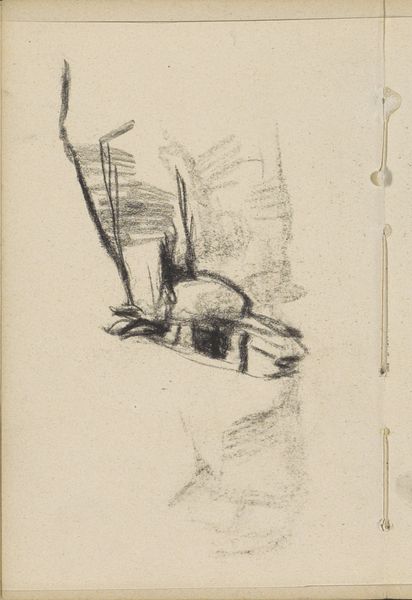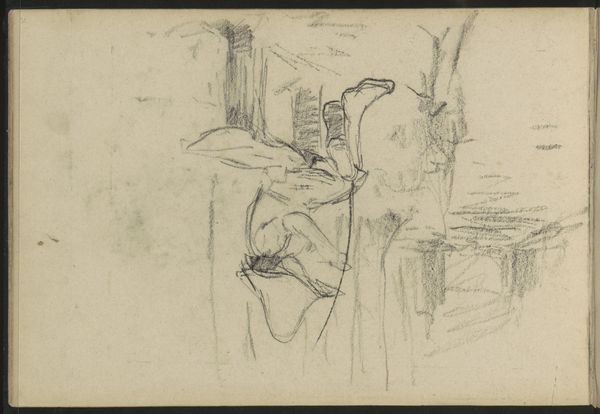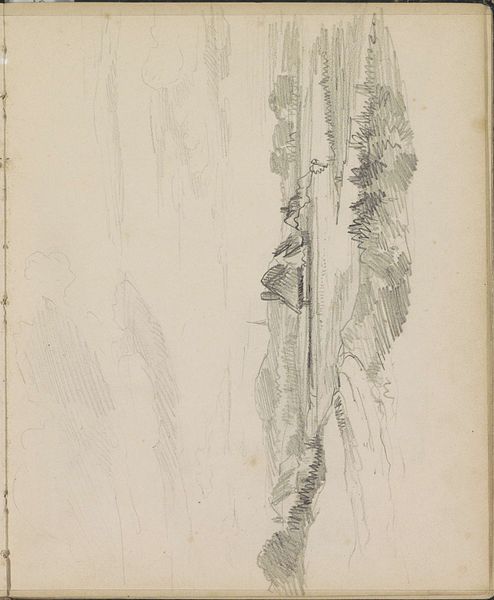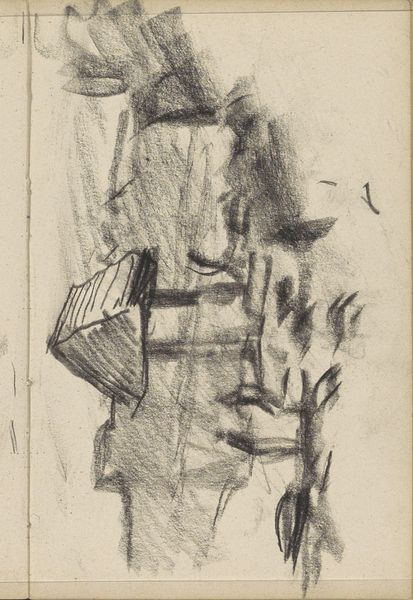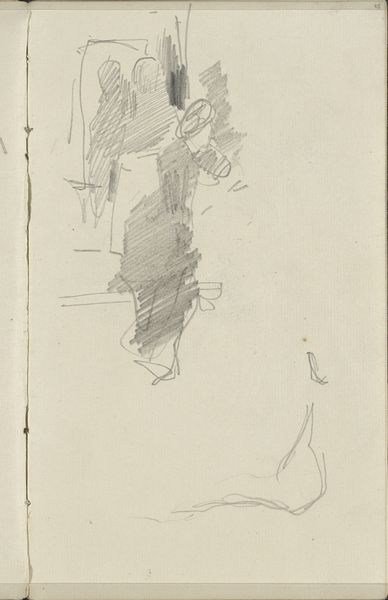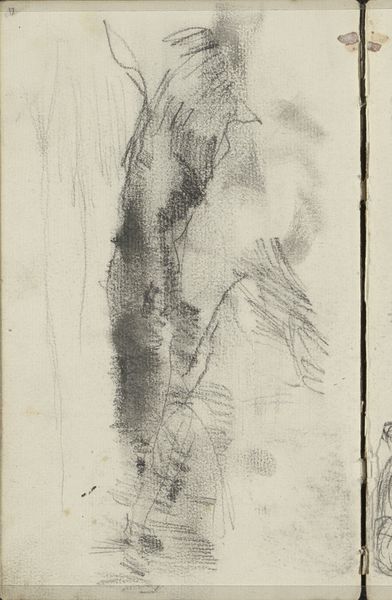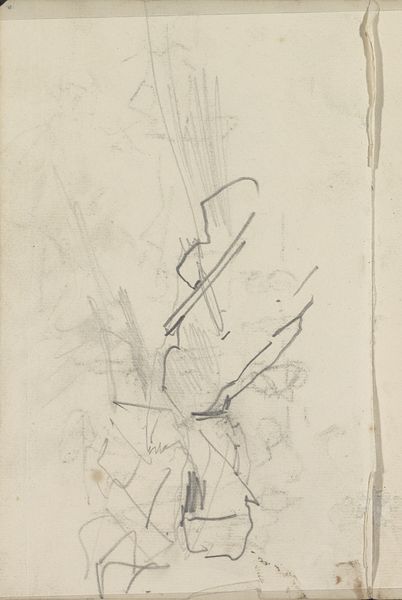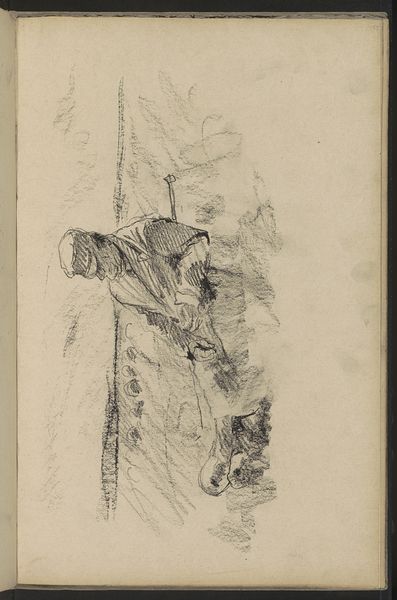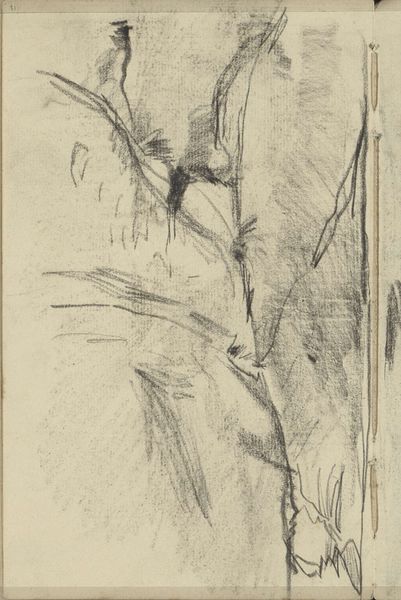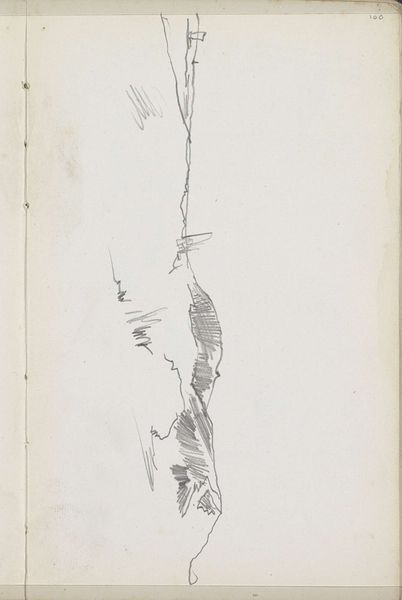
drawing, pencil
#
drawing
#
impressionism
#
landscape
#
pencil
Copyright: Rijks Museum: Open Domain
Curator: Before us we have "Figuren op en rond een boomstam," a pencil drawing by Willem Witsen, likely created between 1884 and 1887. Editor: It has a definite, rough energy, doesn’t it? Almost anxious. I immediately think of the labor that is reflected by this piece; these quickly sketched lines and gestures imply to me that it was maybe drafted under hurried conditions? Curator: Precisely, observe how the stark values in the charcoal create form. Note the gestural hatching that builds tonal depth behind the main subject. Witsen employs classic tonal techniques here, reflecting academic study, albeit within an Impressionistic lens. Editor: That may be, but I am more concerned with the actual labor that must have been done by the workers depicted, and even by Witsen himself as he renders his piece. To me it evokes a kind of industry, perhaps agriculture, since the work depicts individuals that look to be amidst nature. One can see the trace of their activity here. Curator: But aren’t we both looking past a profound artistic moment in its own right? Here we have an artist engaging with the classical trope of figures amidst nature, pushing at its very boundaries with the loose and impressionistic application. Look at the barely-there suggestion of figures melting back into the woodland environment! Editor: Indeed! How does this particular material treatment then underscore a narrative about social structures? One perhaps embedded with commentary about class? Or does the material speak only to the aesthetic properties inherent to this style, to this moment? These choices about execution surely express meaning of a greater import than just aesthetics. Curator: Perhaps... The visual and textural impact of these Impressionistic techniques employed serves primarily, in my opinion, to convey the sensation of fleeting moments within nature. That these may indirectly mirror social themes feels to me more coincidental than intentional. Editor: An intriguing consideration, nonetheless. Considering the period it was produced and current academic and social standards for art creation, maybe intention is the wrong thing to assess, though... Instead, the confluence of material and process— Curator: In the end, regardless of intent, this sketch succeeds in visually articulating the transitory nature of being. Editor: Leaving us pondering the conditions from which this all arises!
Comments
No comments
Be the first to comment and join the conversation on the ultimate creative platform.
